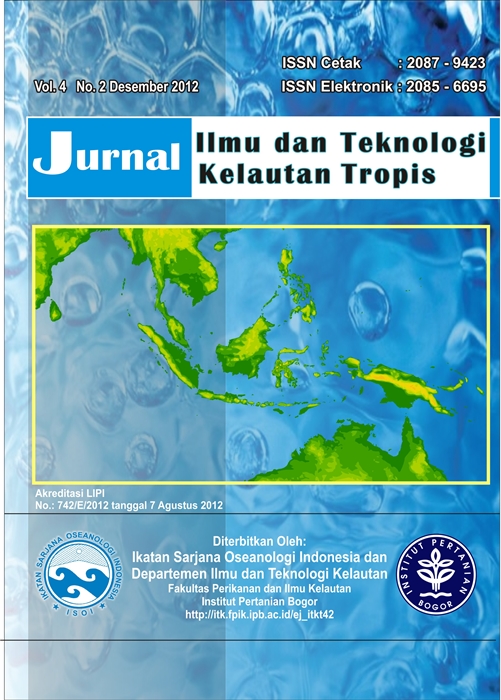INCREASING COLOR QUALITY OF RED EMPEROR SNAPPER Lutjanus sebae SEED THROUGH ENRICHED DIET WITH RED FRUIT Pandanus conoideus OIL AS BETA-CAROTEN SOURCE
Abstract
Market price of red emperor snapper Lutjanus sebae is often determined by its color performance. Adding beta-carotene on a fish diet would possibly escalate red pigmentation. Oil from a red fruit (Pandanus conoideus, Lam) known as potential beta-carotene source was used as a supplement diets. The dosage of 10, 5, and 0 ml were added to every kg of pellet as the treatment. Three hundred seeds with initial average length of 8.43±0.9 cm and body weight of 13.22±3.9 g were stocked in each of three unit fiberglass tank of 4 m3 seawater (salinity of 33-34). Experiment was conducted during three-month periods. Feeding frequency was twice a day with dosage of 3% of biomass. Monthly monitoring was done to measure the growth rate. Color performance was taken by digital photography at the end of observation and analyzed by conversion methods of color gradation using “Microsoft Adobe Photoshop-8”program. Carotene contents in the diets and fish body was examined. Fed effectivity values were observed by analysis of feed conversion ratio (FCR) and water quality that observed every 3 days. The results showed that the Pandanus conoideus oil as beta-carotene source had a significant role in increasing performance of red emperor snapper color i.e. brighten in red color. Ten ml dosage of Pandanus conoideus oil gave the best color and growth performance with 17.99 cm and 143.10 g for total length and body weight respectively, with 95.67% survival rate.
Keywords: Beta-carotene, Color Performance, Red emperor snapper, Red fruit oil.
Authors
The author submitting the manuscript must understand and agree that the copyright of the article manuscript must be submitted/transferred to the Jurnal Ilmu dan Teknologi Kelautan Tropis. This work is licensed under the Creative Commons Attribution-ShareAlike 4.0 (CC BY-SA) International License in which the Author and Reader can copy and redistribute the material in any media or format, and remix, modify and build material for any purpose, but they must provide appropriate credit (citing articles or content), provide a link to the license, and indicate whether there is a change. If you mix, change, or create material, you must distribute your contribution under the same license as the original.


